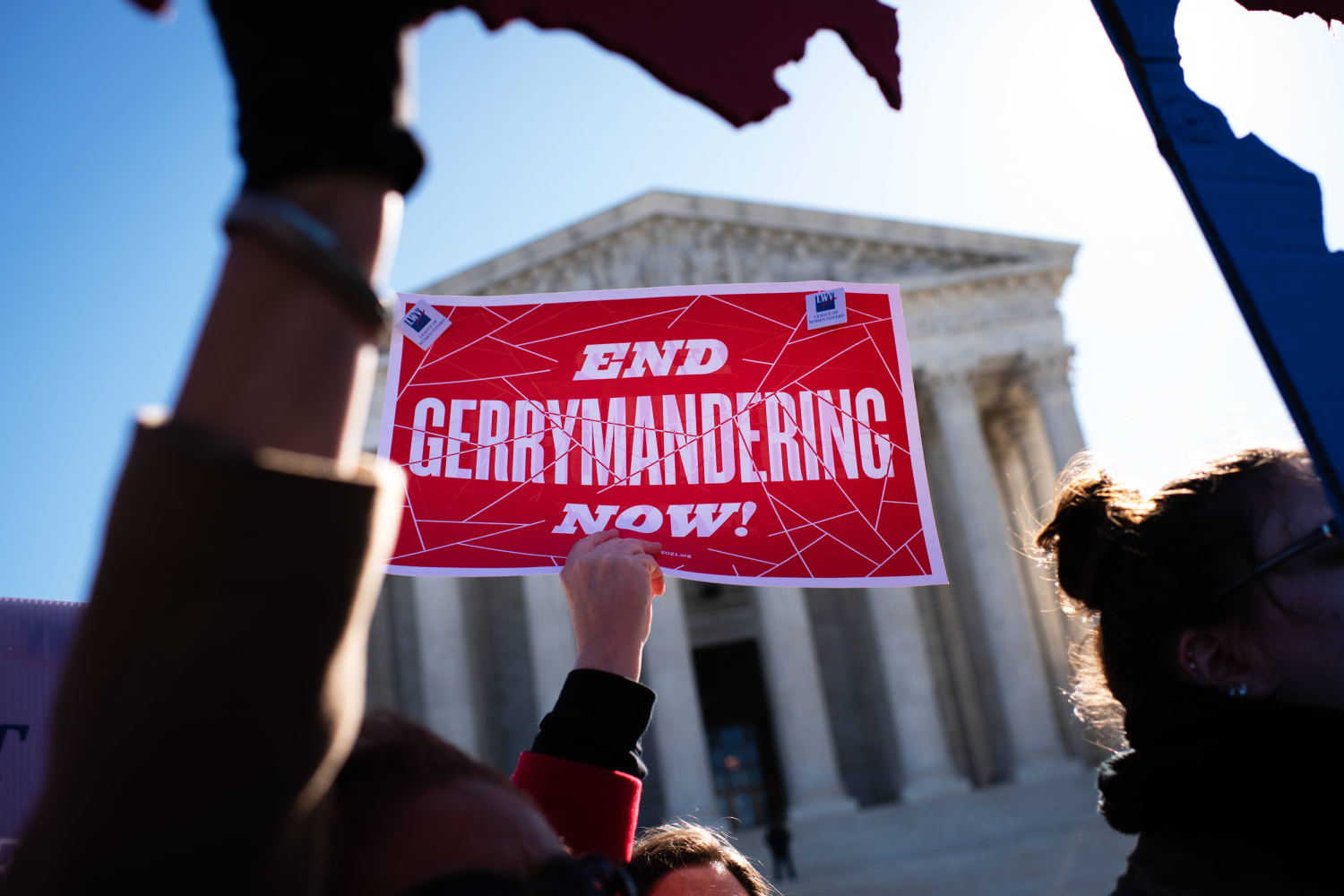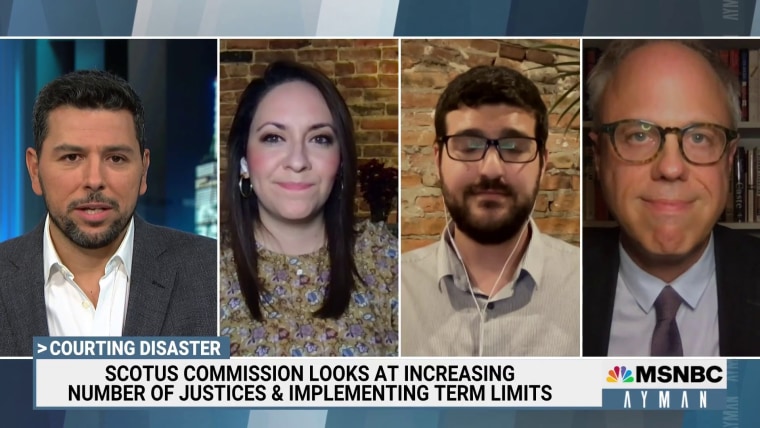More than a dozen states are changing how they factor incarcerated Americans in redistricting maps this year, unwinding a longstanding practice that critics call “prison gerrymandering.”
The changes were spurred by state and national advocacy over concerns on how mass incarceration and the increasingly partisan process of drawing political district lines for elections was affecting people of color in state and local elections, and research that helped indicate how much communities of color were losing because of these changes.
“When you have people sharing their stories about what it feels like to have your body counted to inflate the vote of prison staff who honestly might be abusing you on any given day, to hurt your family and community’s representation back home is just so emotional and really moving,” said Villanova University Professor Brianna Remster, who has studied the effects of this practice on states. “People sharing their stories is really what got lots of folks thinking about it.”
The U.S. Census counts Americans at “their usual residence,” which for the nation’s more than 2 million incarcerated people is the address of their prison facility. Before 2000, the number of people behind bars was statistically small enough that had little effect on redistricting. But in the last decade, criminal justice advocates, election experts, and researchers say, growing prison populations — disproportionately people of color — are increasingly affecting and undermining the fairness of state and local redistricting and elections.
Counting incarcerated residents at the site of their prison puts large blocks of residents in districts where the vast majority cannot vote and likely have no ties. In practice, experts say, it allocates prisoners’ political representation to often rural and white districts where prisons are located at the expense of urban, more diverse districts where incarcerated people lived before their convictions. Changing the maps so that prisoners are counted in their home districts would reverse that in many places.
According to the Prison Policy Initiative, a nonpartisan criminal justice-focused think tank, Washington, Virginia, New Jersey, Nevada, Illinois, Connecticut, Colorado, and California have all passed legislation in the last few years adding or expanding policies to count at least some prisoners in their home districts in some or all local, state, or federal district lines, instead of at the location of their prison. Those states join Maryland and New York, which started placing incarcerated residents at their last known address in the 2010 redistricting cycle; Maryland does so for both state, federal, and county districts, while New York made the change in state and local districts.
Other states are making the change during this cycle, including Delaware, where legislation from 2010 will be implemented this year. Pennsylvania’s redistricting commission also recently decided to return prisoners whose sentences would expire by the end of the decade to their home districts, and more states are lining up to follow.
Montana’s redistricting commission is reportedly considering similar reforms while Rhode Island’s commission has said it will address the issue soon. In New York, voters will weigh a ballot measure on Tuesday that would expand the reform to the state’s Congressional districts and codify the change into the state constitution.
Massachusetts is not counting voters at home, but according to Prison Policy Initiative, the state is still avoiding concentrating prisoners based on where they are incarcerated in their maps in this year’s maps.
Illinois’ legislation won’t be implemented until the next redistricting cycle, but in total, at least 12 states will deploy legislative maps that put some incarcerated Americans back in their home districts this year. In total, approximately half the nation now lives in a state that’s formally rejected the practice.The laws and policies vary on the mechanics — like how prisoners are returned to their home districts within the data, which legislative district lines are affected, whether the change applies to federal or state prisoners or both — but experts say the change will have a considerable effect on communities of color.
Remster and her Villanova colleague Professor Rory Kramer together examined the impact of incarceration on political representation in Pennsylvania in a 2019 study, concluding that Black and Latino communities were starkly underrepresented while white residents were slightly overrepresented in the state’s district maps. The effects were so considerable that the researchers predicted that a redrawn legislative map in Philadelphia would have included an additional House district where the majority of residents were people of color.
The research helped motivate Pennsylvania’s decision to change how they handle some incarcerated voters in this year’s maps, they said. They’ve since applied their research to other states’ redistricting plans and found similar impacts.
“If you live in a district that has a heavy police presence, regardless of whether you’ve ever been pulled over by the police, you have less representation,” Remster told NBC News.
The numbers aren’t big enough to influence Congressional districts, experts said, but significant numbers are seen in state and more local level districts. According to the Prison Policy Initiative, 40 percent of one state House district in New Hampshire is incarcerated people. In Connecticut, state House District 59 is 14 percent incarcerated, the group said. Drill down into the smallest county-level district maps and the numbers get bigger. In Juneau County, Wisconsin, 80 percent of the county’s District 15 are incarcerated, giving the handful of eligible voters there enormous political power.
Aleks Kajstura, the legal director of Prison Policy Initiative, said criminal justice reform is stifled by lawmakers who benefit from prisons in their districts.
“If you’re ending prison gerrymandering, you need to convince a couple thousand more voters to vote or you,” she told NBC News. “Whereas with the prison population there, you get constituents on paper that you’re never responsible for.”
Kajstura pointed to New York, where she said strict anti-drug laws bloated the populations of prisons in areas dominated by lawmakers who opposed changing the laws.
“It had a clear impact in terms of policies,” she said, adding that the legislators representing areas with large prison populations often sat on the committees that could have changed the laws. “They had an incentive to keep the prisons full.”
She added that the issue would be solved if the Census counted incarcerated Americans at their previous addresses, and advocates are pushing for it. According to the Federal Register, the Census Bureau received 77,863 comments from the public supporting a move in 2018, but opted not to make the change.
Some experts said so-called prison gerrymandering reminded them of racist disenfranchising laws of the past.
“It feels very much akin to the Three Fifths clause in the original Constitution,” said Doug Spencer, an elections expert and professor at the University of Colorado. “We’re stripping you of all your rights, but we definitely want to use you — meaning this primarily minority but prison population — as a political chit to increase our political power out in rural parts of this country. It smacks of that same spirit.”
Source: | This article originally belongs to Nbcnews.com











